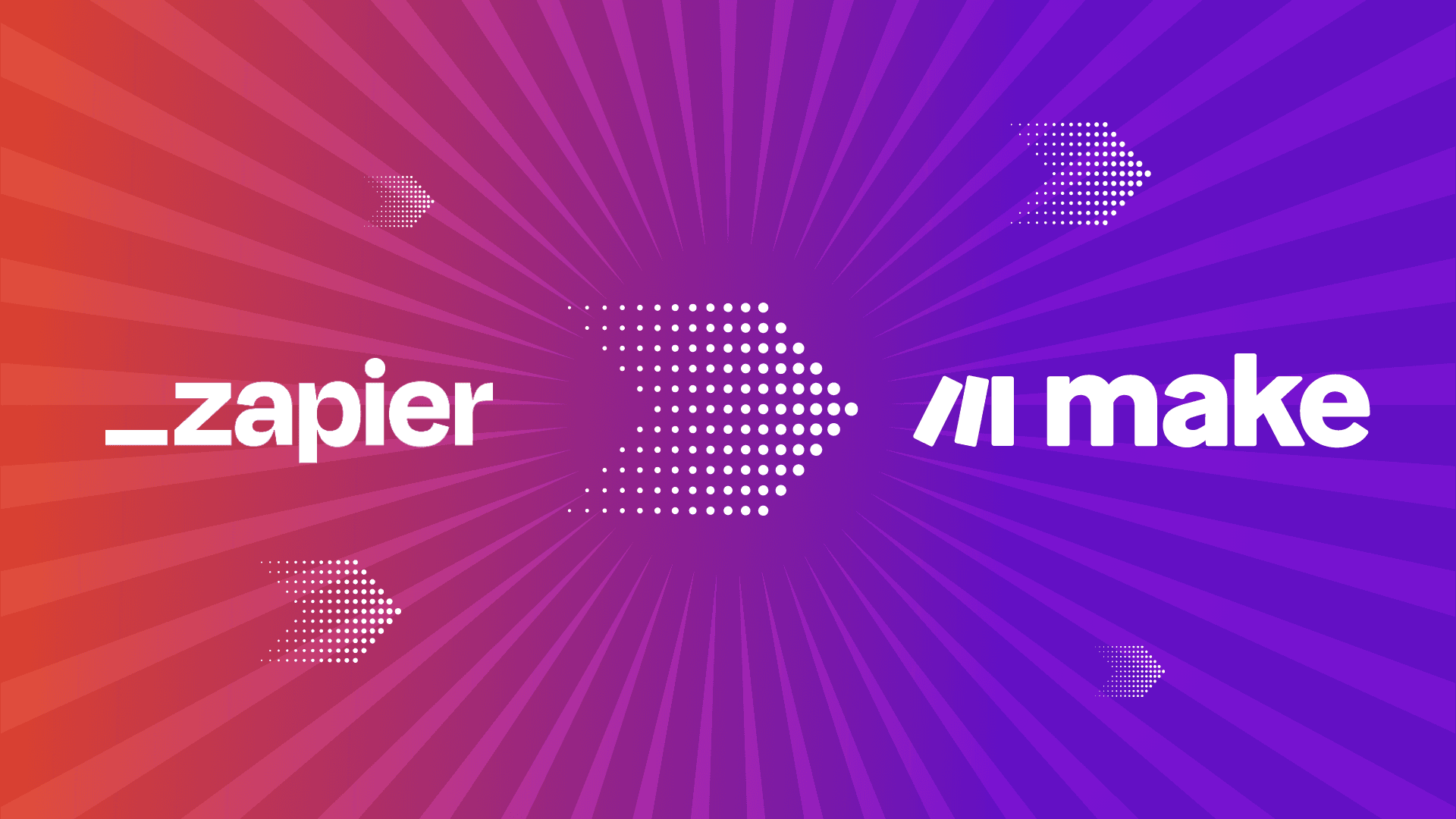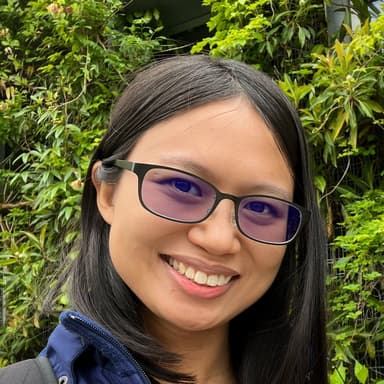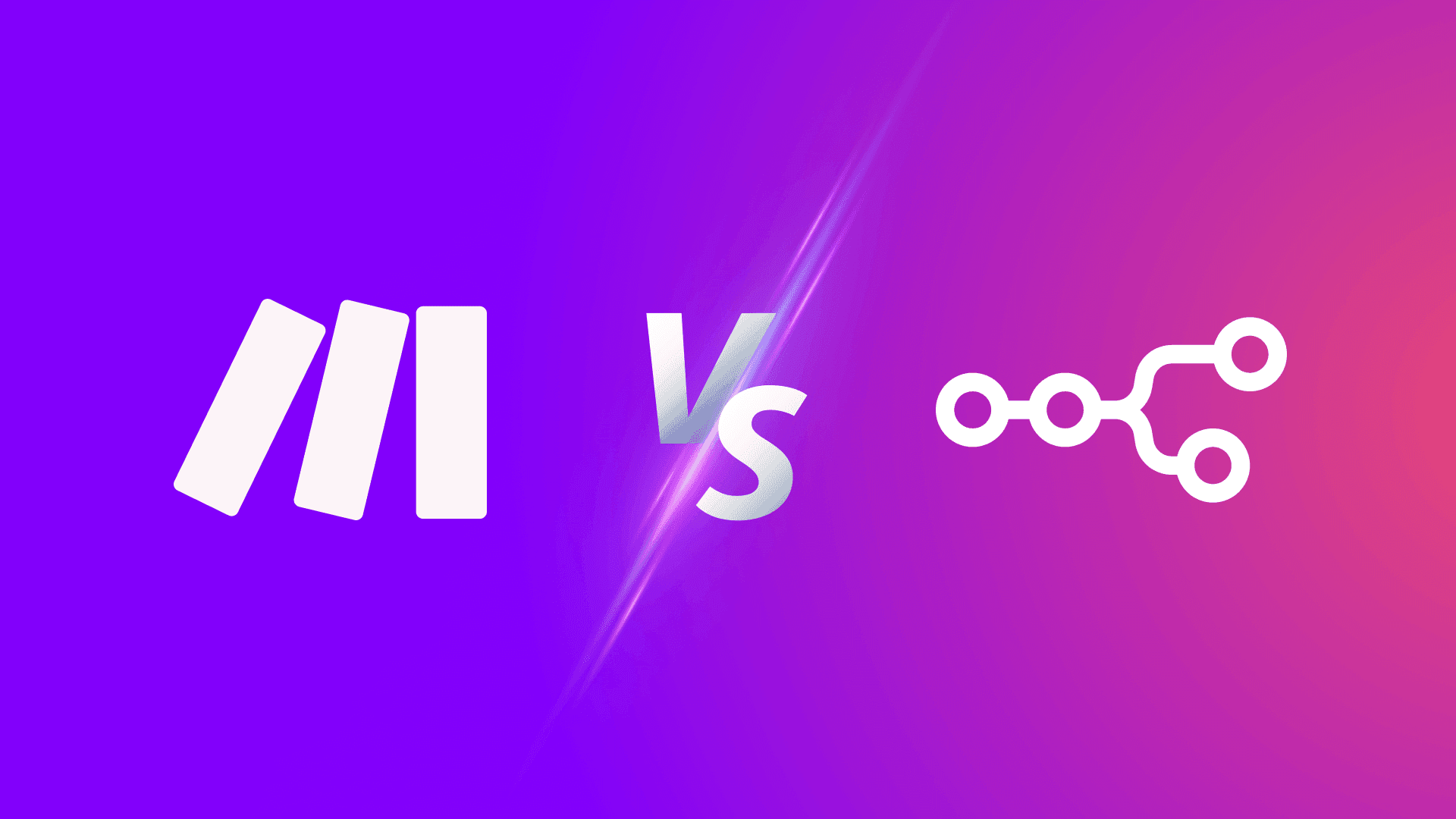Sep 26, 2024 | 5 minutes
Make vs Zapier: Why users switch to Make
What are the differences between Make and Zapier that lead to Zapier users switching to Make? Learn how these automation platforms fare against each other.

Have you wanted to automate a workflow in Zapier, but found the platform too inflexible to achieve your end goal?
You wouldn’t be alone.
Zapier is often the tool of choice for people who want to use automation to level up the way they work — be it running a business, marketing their products, prospecting for sales, or something else. It’s great if you’re new to automation, but it can quickly lead to frustration as you find yourself limited to building automations in predefined ways.
Basically, things come down to:
Should you have to force-fit the way you work to match your automation tool’s confines?
Or, do you want your tool to seamlessly mold itself around the way you work?
What we see happening at Make is that once users want to move beyond beginner-level automations, they look to us for solutions. Customers often talk about reaching a tipping point in their automation journey, which led to them checking out Make, loving its additional capabilities and intuitive interface, and then jumping ship.
Make and Zapier: What are the differences?
If you’re reading this, you might be in the process of switching from Zapier to Make, or at least looking for alternatives to Zapier.
We’ll address some of your most pressing questions, including:
What are the differences between Make and Zapier that lead to Zapier users switching to Make?
If you’re ready to do the same, how can you transition to Make?
Let’s dig into the details.
A unique visual automation builder puts you in control of the flow
Make takes a visual approach to workflow automation. Your automations (called “scenarios”) contain colorful app modules and animations that illustrate the actions you’re automating and where your data is flowing to at any point.
You may have already seen some of these multicolored scenarios online:
Image credits: Damian Koh and Evgenii Tilipman on LinkedIn
You can drag and drop your scenario’s modules anywhere in the builder and organize them in clusters to distinguish between the tasks they automate. This is especially useful as your scenarios grow in size and complexity, and you need to easily communicate what they do.
In contrast, Zapier’s automations editor is more linear, rigid, and table-like. You can move your Zaps’ branches around, but less flexibly. As a result, visualizing your automation’s data paths — and getting buy-in from business stakeholders — can be more challenging.
Go beyond simple task automation to unlock smarter ways of working
Zapier’s strength is in point-to-point integration, which can be best summarized as “if this, then that.”
For example: You have two apps. If an app receives data, you want to move that data to another app, and then get that app to do something with it. Zapier can do this.
Well, Make can do this too — and its strength lies in going much further. Make’s scenario editor can take your data, transform it, and send it through multiple apps, executing a series of actions based on the conditions your data meets (or doesn’t).
Yet, even as your scenarios branch out, their visual, step-by-step nature breaks down the potential complexity. You’re still in command.
Given Make’s superior automation capabilities (which you’ll read about next), Makers routinely use it for more than just handling simple “if this, then that” efforts. They’ve built entire systems for doing things faster, more productively, and even in groundbreaking ways.
Superior automation capabilities
While Zapier lets you integrate thousands of apps (7,000+) and is possibly the most-connected automation platform out there, we’ve learned of businesses leaving Zapier after encountering development limitations. How is that possible, and how does Make differ?
We have answers.
Automate more actions in virtually any app
Simply looking at the number of apps doesn’t paint an accurate picture of the range of actions you can automate.
Make supports 2,400+ apps and generally more API endpoints per app than Zapier. In other words, Make lets you automate more types of app actions.
For instance, Zapier supports only 25 actions in Xero while Make supports 84 (including searches). These additional supported actions include:
Downloading an invoice
Deleting a purchase order
Getting information on a payment
Executing unsupported actions in Zapier might involve making API requests — a beta feature available in a much smaller pool of apps.
On top of this, Make’s HTTP module lets you connect virtually any app that has made its API available even if Make doesn’t officially support it. The possibilities are limitless.
Add new capabilities to your automation arsenal
Make takes the cake when it comes to features and tools. Make provides various capabilities that Zapier lacks:
Multi-step workflows and instant webhook execution in all Make plans.
The ability to choose the range of data that your scenarios should process, like all data since a certain date or all data received from now on.
Aggregators to merge data as you need.
Scenario inputs to trigger automations.
On-demand scheduling to trigger scenarios via authorized API calls.
Dynamic connections for adding placeholder account connections users can flexibly replace with their own before running the scenario.
The option to disable the logging of data transmitted through the scenario (useful for when you work with sensitive data!).
Array manipulation, JSON/XML parsing and serialization, cycles, and phases.
Uniqueness aside, there are various features in Zapier that Make has mastered:
Most Make scenarios can handle an unlimited number of modules. In contrast, Zapier always has a fixed limit of 100 steps per Zap. While occasionally there may be a module limit reached in Make, it's highly dependent on the specific modules, and so we never try and limit you across the board.
Unlimited scenario routes. Zapier allows for up to 10 branches per Path and up to three nested Path steps in each Zap. Meanwhile, Make scenarios can accommodate unlimited routes that splinter off as many times as you need.
A versatile AI Assistant capable of not just scenario building, but also mapping, support, error management, and much more. Plus, Make offers a suite of AI tools designed to serve a wide range of use cases.
Working with files, including image resizing and format conversion, encryption, and archiving. Zapier does provide some file manipulation capabilities, but they aren’t as advanced as Make’s.
While Zapier is a functional tool for simple integrations, Make’s range of technical features makes its automation capabilities unparalleled and a significant upgrade.
Automate more for less cost
We’ve seen many Makers switch from Zapier after finding Make a much more cost-effective automation solution. So, let’s crunch some numbers.
Zapier’s paid plans start from $19.99/month for 750 tasks on annual billing. If you’re on this plan, you’ll pay approximately $0.026653 per task.
In contrast, Make’s most affordable paid plan is $9/month for 10,000 operations, also on annual billing. This works out to about $0.0009 per operation.
Zapier tasks and Make operations broadly refer to the same thing — successful app actions. This means you could enjoy almost 30x in cost savings per app action in Make.
Of course, the full cost of your automations depends on the number of app actions they take and how often they check for new data.
In Make, trigger actions count toward your operations limit even if there’s no data for the rest of your scenario to process. Zapier doesn’t count trigger steps toward the task limit, so an automation can cost more to implement in Make than Zapier if it’s frequently being triggered to check for new data.
But not all automations need to process new data so often, or 24/7 for that matter. By being strategic with your scenario runs, like increasing the time interval between each run or turning your scenarios off overnight, you could reap substantial cost savings in Make.
This discussion on Zapier vs Make pricing can sound abstract. So, our suggestion is to sign up for a free Make account and replicate a few Zaps as Make scenarios.
Run these scenarios to see how many operations they use and calculate your costs from there. You’ll also be able to track your total operations usage from your account dashboard.
How to transition from Zapier to Make
If you’ve decided that switching from Zapier to Make is the logical way forward, here’s how to go about it.
Familiarize yourself with Make’s terminology
From “Zaps” to “scenarios,” Make and Zapier use different terminology for certain features. Brush up your knowledge of Make’s terms to get the hang of the platform quicker.
In fact, users who took the time to figure things out have told us they find Make easier to use than Zapier!
Feel free to refer to our glossary for detailed explanations of each Make term.
Migrate your Zaps
Now, you’ll recreate your Zaps in Make.
Start new scenarios for each of your Zaps, and then add and connect the modules, routers, filters, and so on that correspond to their Zapier counterparts.
For example, if you have this Zap for forwarding emails in Gmail with certain keywords to another email address:
Its recreated Make counterpart may look like this.
Test your scenarios to ensure they work, and then schedule them to run at your preferred intervals.
Learn more about creating a scenario here. Our Help Center and Make Community also provide a wealth of resources for familiarizing yourself with Make’s features.
We recommend that you migrate all your Zaps before you cancel your Zapier subscription, just in case you still need to access some paid functionality.
Make your move from Zapier
Zapier aims to make automation accessible for beginners. And respectfully, it does this well, helping people with limited technical background automate simple tasks in a structured, controlled environment.
This may be you, at first. But over time, you may start to hit a ceiling as to the workflows you can automate in Zapier while racking up a high automation bill.
That’s when you’ll need an alternative solution that scales to your needs, striking the right balance between powerful capabilities, ease of use, and cost to make your automation goals a reality.
Make is that solution for over 500,000 other Makers, and it can be for you, too. To get a firsthand impression of what Make can do for you and your business, sign up for a free Make account and try building a scenario in our visual editor.
Make it as simple or as complex as you’d like. Unleash your creativity and start building today.
This post was originally published in October 2020 and has been updated for comprehensiveness in December, 2022 and again in September 2024.











